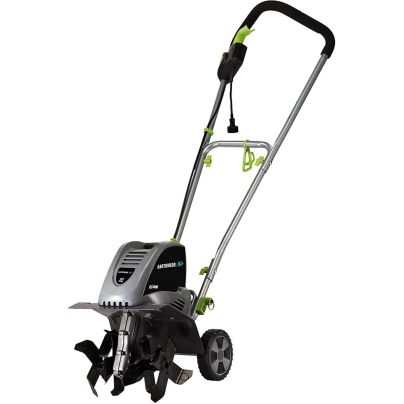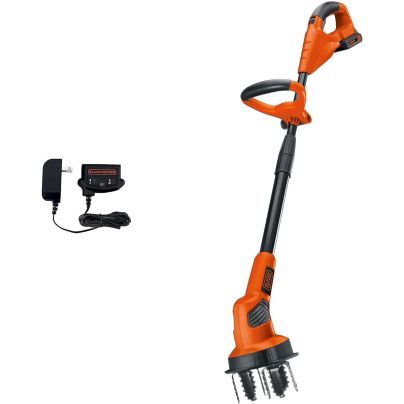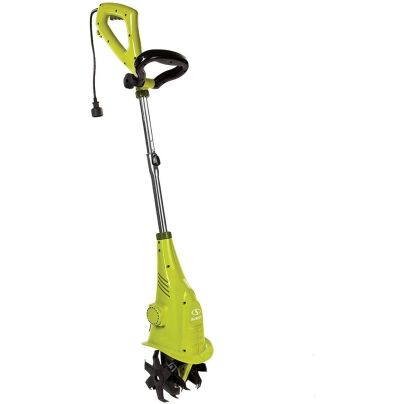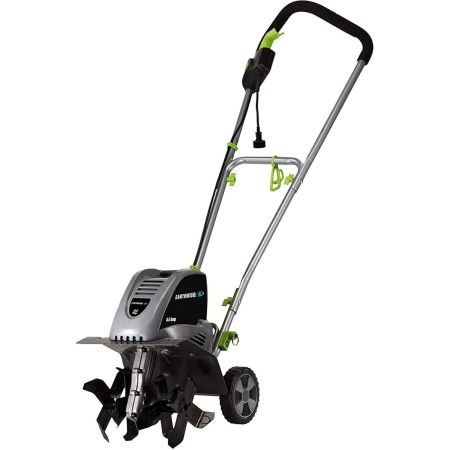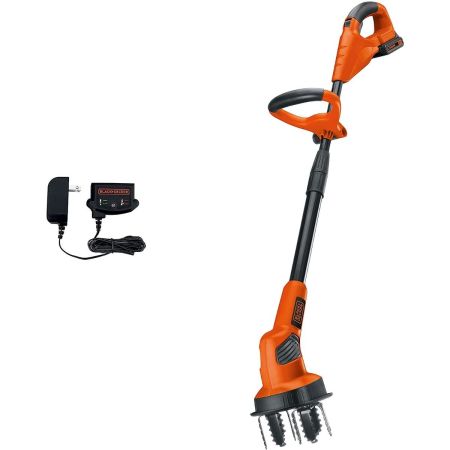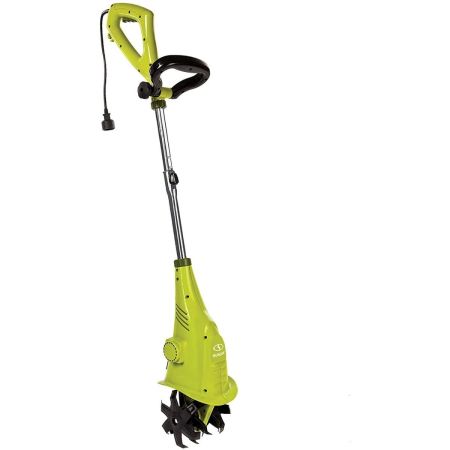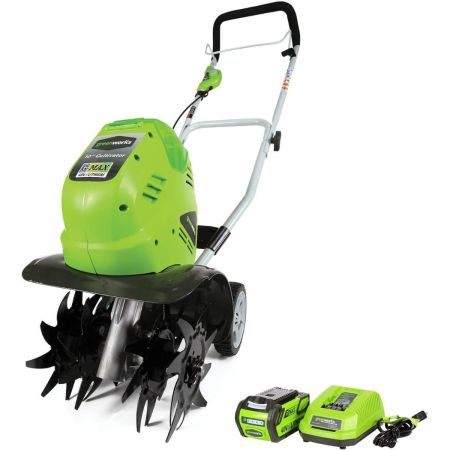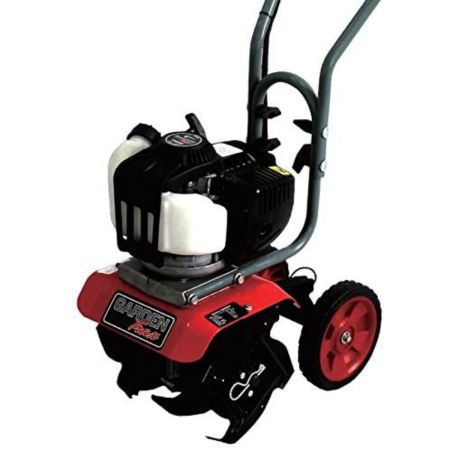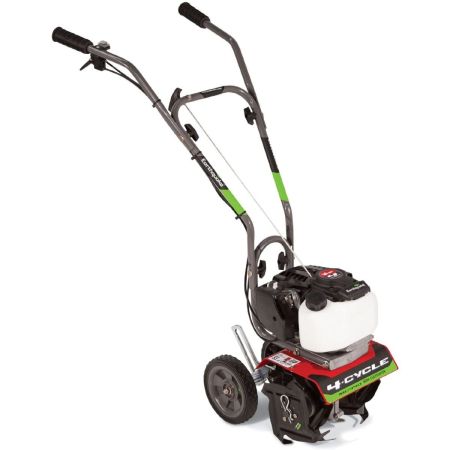We may earn revenue from the products available on this page and participate in affiliate programs. Learn More ›
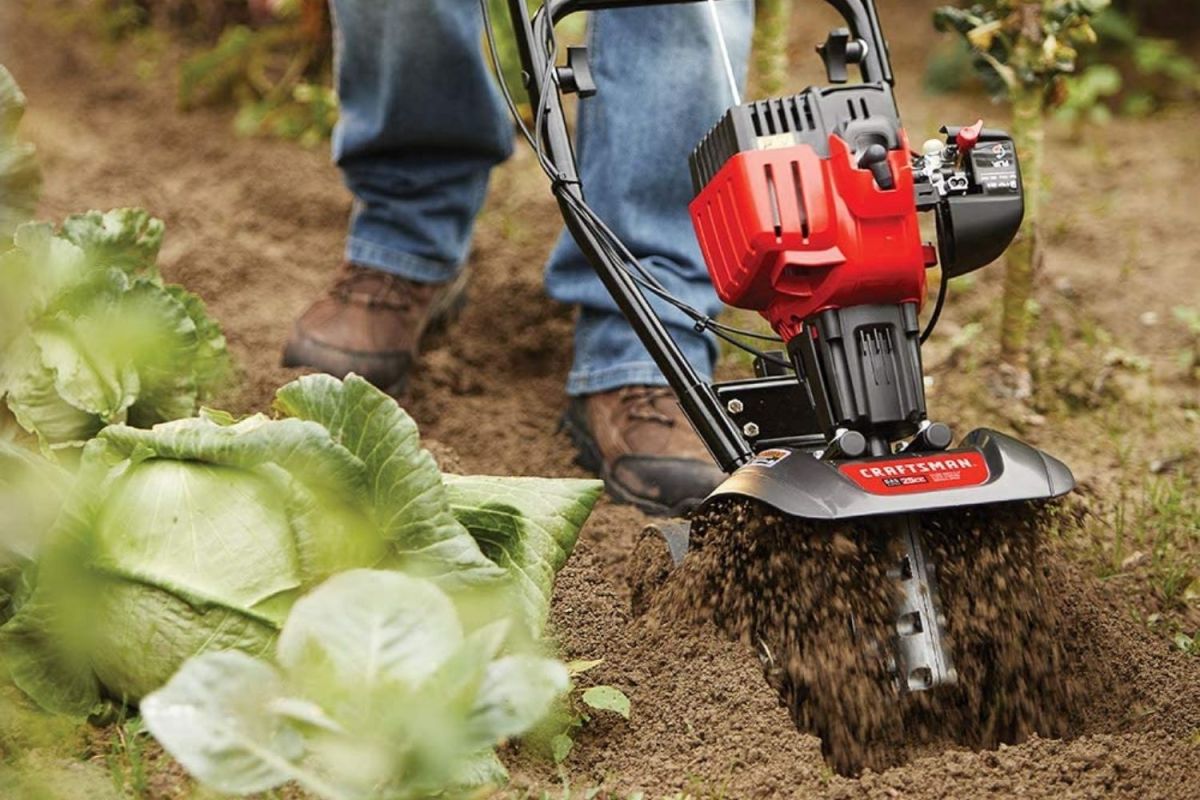
Few gardeners are blessed with the loose, loamy soil plants love. For those who must break through heavy clay soil or fix poorly drained soil, using a tiller can be the first step on the path to a lovely, bountiful garden. Heavily trafficked areas and those with hard soil, often in areas where rain pools and is slow to drain, are great candidates for tilling.
Mechanized tillers make it easier to work in soil amendments like compost and fertilizer, and they help aerate the soil and increase permeability. All of this boosts the growth of beneficial soil organisms in the soil, translating to a better growing experience—and a healthier back, too.
Tillers are an invaluable tool for making soil workable and transforming a landscape, but there isn’t a one-size-fits-all solution for every garden. This guide highlights the important features like size, engine, and tine options to help you choose the best rototiller for the job. Plus, a selection of some of the top options in a range of categories is listed below.
- BEST OVERALL: Earthwise TC70001 11-Inch Electric Tiller/Cultivator
- RUNNER UP: BLACK+DECKER 20V MAX Tiller LGC120
- BEST COMPACT: Sun Joe TJ599E 2.5-Amp Electric Garden Cultivator
- BEST CORDLESS: Greenworks 40V 10 inch Cordless Cultivator
- BEST CULTIVATOR: Garden Trax Mini Cultivator Tiller
- MOST VERSATILE: EARTHQUAKE 12802 Mini Cultivator
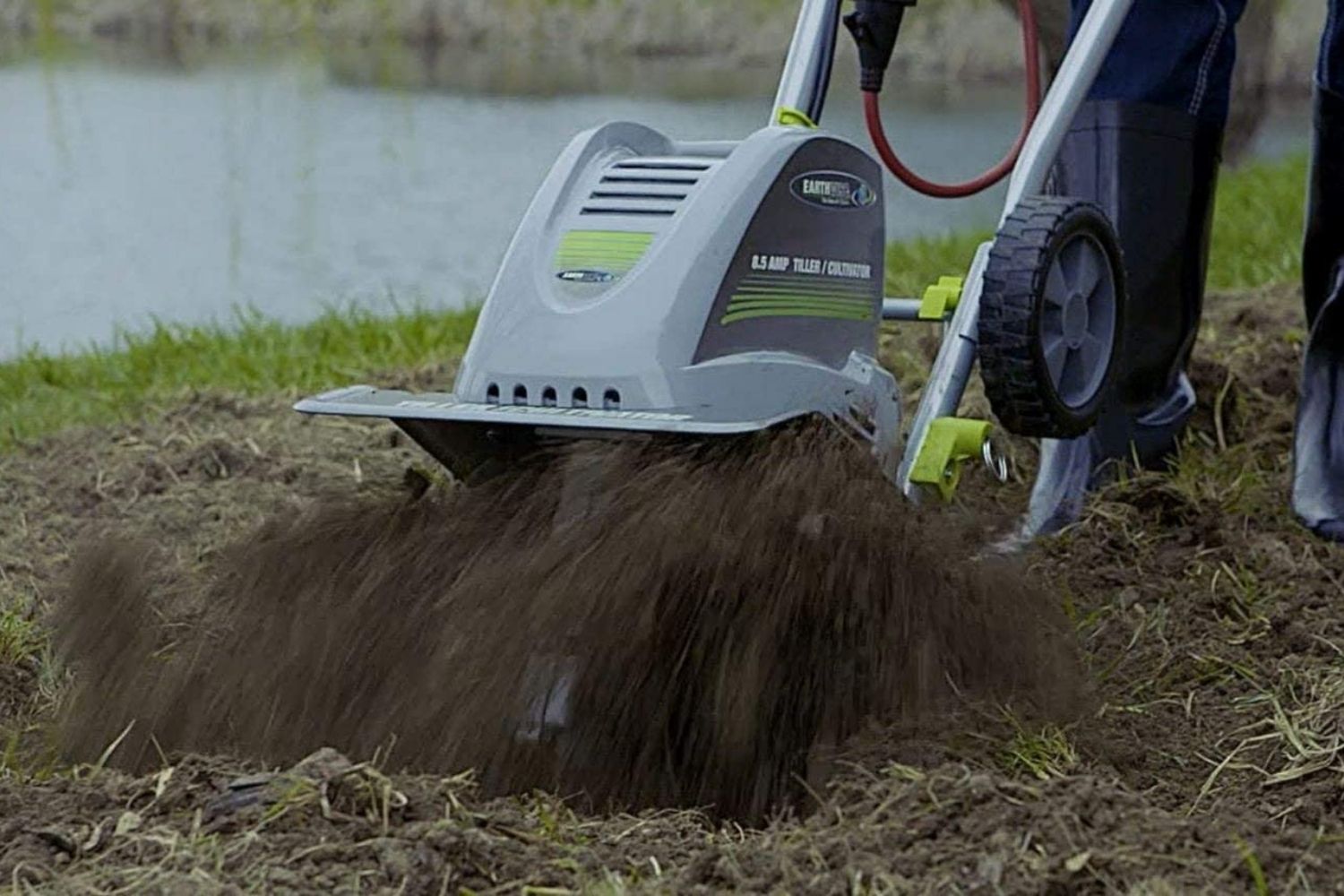
Tiller vs. Cultivator
Though the two terms are often used interchangeably, tillers and cultivators differ in functionality and purpose. When shopping, it’s important to understand which tool is more suitable for your specific gardening needs.
- Cultivators are best used in existing beds to loosen the top few inches of soil and break up the crust that results from the impact of rain on exposed soil. The crust prevents air, water, and nutrients from reaching plant roots and beneficial soil organisms. Furthermore, a loose soil surface makes it easier for germinated seeds to penetrate through the soil as they reach for sunlight. Cultivators also work well to uproot weeds around existing plantings or to prep the soil before planting a vegetable or flower bed.
- Tillers, on the other hand, work best in areas requiring more muscle, like new beds that need improved airflow and water permeability. The tiller tines dig deeply to turn over the soil, sometimes requiring several passes over the bed to break down heavy clods of soil into a workable substrate. If a tiller is used in a densely planted landscape bed, more harm than good may be done by damaging the root systems of existing plants. Furthermore, digging too deeply in an established bed can destroy developing soil structure and displace worms and other beneficial soil organisms.
- Tiller/cultivator combinations offer the benefits of both tools with the option to adjust the digging depth of the tines on some models. Wheeled combos require that the machine is tilted forward or backward to adjust depth.
What to Consider When Choosing the Best Rototiller
There are a few shopping considerations to keep in mind when looking for the right rototiller for the job. In particular, think about the power source, type of tines, size, and portability so you can get the most out of your purchase.
Power Source
Tilling heavy soil can be backbreaking work if trying it by hand with a shovel, but it doesn’t have to be tough when armed with the best rototiller for the job.
The ideal rototiller has an engine that fits with the landscaping goals. For existing beds that require some moderate cultivation, an electric tiller will likely fit the bill. These tillers tend to be less powerful than their gas-powered counterparts, but they’re often lighter in weight and more compact. For cutting new beds and working in compacted soil, a gas-powered tiller makes the work easier.
Unlike electric tillers, the heavier and often larger gas-powered tillers have unlimited strength and run on two-cycle or four-cycle engines. Though cheaper, two-cycle engines require a mixture of oil and gasoline to operate. Four-cycle engines run on gas alone, which makes them cleaner and more environmentally friendly than two-cycle engines.
Corded vs. Cordless
Some rototillers and cultivators can run on electricity through an electrical cord or using battery power.
- Corded rototillers rely on a direct connection to a power outlet, though an extension cord can help increase mobility. These tillers are a good option for gardens located close to power outlets. However, the cord can be a nuisance to keep track of while working, and it can also limit a user’s movement.
- Cordless rototillers rely on rechargeable batteries that typically work for 30 minutes to 2 hours on a single charge, depending on the model. These tillers are great when working away from a power source, and they don’t pose a tripping hazard. Still, users will need to keep an eye on battery life while they work.
Tines Positioning
Rototillers vary in how the tines are positioned on the tool. Differences in the positioning of the tines affect how the soil is tilled.
- Front-tine tillers have forward rotating tines located in the front with small wheels positioned behind the tines. These tillers typically don’t reach deeply and are best for use in existing beds that require light cultivation for weeding or adding soil amendments.
- Rear-tine tillers have large wheels positioned in front of the tines and are ideal for new beds or heavily compacted soil where the tines can dig deeply, lifting clay and rock with each pass. Vertical-tine tillers offer the best of both worlds. The churning action of the tines, much like an egg beater, uses a forward motion to cut through and stir the soil.
- Unlike rear-tine machines that require several passes to break and then mix the soil, vertical-tine tillers do it all with one pass and can help gardeners create new beds or cultivate existing ones.
Size
Mechanized tillers can have adjustable tilling width and dig deeply into the soil—8 to 10 inches and sometimes deeper for new beds—breaking up compacted or rocky soil.
The wider the tiller, the more ground it can cover, which means fewer passes across the bed to till the soil to the desired crumble and depth. This convenience, however, comes with a price. Large tillers often are heavier and more difficult to maneuver in small beds.
Electric tillers, while lighter, lack the power to turn heavy soil but till well in new beds where soil works easily. Consider a mini tiller for small gardens that are less than 1,500 square feet and have loose soil.
A 5- or 6-horsepower tiller will handle a medium-size garden. Large gardens more than 5,000 square feet or those with heavily compacted soil will benefit from the added power of a tiller with a 6-horsepower engine or higher.
Portability
As tillers go up in size, they also become more cumbersome and can be tough to operate in tight spots. For this reason, some tillers offer adjustable-height handles for maximum operating comfort or folding handles that make them easier to store.
Many buyers value both power and portability in tillers, but like most things, increased size means increased weight. For this reason, the best tiller should only be big enough to handle the task at hand. Otherwise, there may be operating and storing challenges.
Our Top Picks
Digging heavy soil is physically demanding work, but the best rototiller will turn the most compacted soil into a crumbly and plant-friendly oasis in no time. Check out the following choices for some of the best tillers on the market in specific categories.
Best Overall
Earthwise TC70001 11-Inch Electric Tiller/Cultivator
See ItTill or cultivate with this two-in-one combination tool powered by an 8.5-amp motor. The corded tiller is lightweight at just 27 pounds, and it has a pair of wheels to help support the powerful front tines, so users don’t need to struggle to control the depth or direction of the rototiller.
As long as the rototiller is connected with a suitable extension cord to a nearby power outlet, it will continue working until the job is done. It has four front tines that can reach a depth of 8 inches, and the width of the tines is fixed at 11 inches, making quick work of medium and large gardens. The handles have comfortable padded grips, and the V-shaped handle makes it easier to control the tiller.
Product Specs
- Power Source: Corded electric
- Motor Power: 8.5 amps
- Cultivating Width: 11 inches
- Cultivating Depth: 8 inches
- Tines: 4
Pros
- Great for medium and large gardens
- Padded grip handles for comfort
- Tiller and cultivator in a single tool
Cons
- No speed control
Get the Earthwise rototiller on Amazon and at Walmart.
Runner Up
BLACK+DECKER 20V MAX Tiller LGC120
See ItIf raised or existing beds require only light cultivating, the BLACK+DECKER may be the right choice. This battery-operated tiller/cultivator can till up to 325 square feet with a single charge. Four-inch counter-oscillating vertical tines make short work of weeds without tangling, and the telescoping shaft helps make this a back-friendly tool.
At just more than 8 pounds, it’s lightweight, easy to operate, and has comfort-grip handles, so working longer is easier. The 20-volt lithium-ion battery, when completely depleted, takes up to 8 hours to fully charge.
Product Specs
- Power Source: Cordless electric
- Motor Power: 4.5 amps
- Cultivating Width: 7 inches
- Cultivating Depth: 4 inches
- Tines: 2
Pros
- Cordless for unlimited reach
- Long battery life
- Lightweight and easy to operate
Cons
- Battery takes a while to fully recharge
Get the BLACK+DECKER rototiller at Amazon, The Home Depot, and Walmart.
Best Compact
Sun Joe TJ599E 2.5-Amp Electric Garden Cultivator
See ItThe Sun Joe corded electric cultivator is equipped with a telescoping shaft that allows for a customized length adjustment. It also has an ergonomic handle that makes it more comfortable to use and easier to control. It weighs just 10 pounds, but since it doesn’t sit on rolling wheels, the user will have to bear the full burden of carrying and maneuvering the tiller.
The corded cultivator is equipped with a 2.5-amp motor that can cultivate 6.3 inches wide and 6 inches deep. Although its smaller size and lower power rating are designed primarily for cultivating, this cultivator also is useful for tilling small sections of soil.
Product Specs
- Power Source: Corded electric
- Motor Power: 2.5 amps
- Cultivating Width: 6.3 inches
- Cultivating Depth: 6 inches
- Tines: 4
Pros
- Affordable
- Adjustable length
- Great for light work
- Lightweight and stores easily
Cons
- No wheels so users must fully support it
Get the Sun Joe rototiller at Amazon, The Home Depot, and Walmart.
Best Cordless
Greenworks 40V 10 inch Cordless Cultivator
See ItThe Greenworks cordless electric cultivator has a 4-amp motor and comes with a battery charger and a 40-volt battery that can power the tiller for up to 40 minutes on a single charge. Instead of having to deal with the pull-cord start common on gas-powered tillers, this rototiller has an easy-to-operate push-button start.
The rototiller weighs about 40 pounds and sits on a pair of small wheels, so the user doesn’t need to hold the entire weight of the machine. The four front tines can till to a maximum depth of 5 inches, and the tilling width is adjustable between 8.25 inches and 10 inches.
Product Specs
- Power Source: Cordless electric
- Motor Power: 40 volts
- Cultivating Width: 8.25 to 10 inches
- Cultivating Depth: 5 inches
- Tines: 4
Pros
- No gas fumes
- Minimal bouncing
- Easy push-button start
Cons
- Pricey
- Battery can be difficult to remove
Get the Greenworks rototiller on Amazon and at Walmart.
Best Cultivator
Garden Trax Mini Cultivator Tiller
See ItThe Garden Trax cultivator is a versatile tool ideal for maintaining the soil health and consistency of the garden. It’s a suitable option for serious gardeners who prefer to weed, mix, and aerate the soil with one powerful machine. While this front-tine cultivator isn’t suitable for breaking up hard ground, it can be used in all types of pre-tilled earth with a max tilling depth of 4 inches.
The gas-powered cultivator has a two-cycle engine that provides ample power for mixing a consistent amount of fertilizer, mulch, and soil throughout the garden. It weighs just under 30 pounds, though most of the weight is supported by two adjustable wheels. The cultivator also has a tilling width that’s adjustable from 6 to 12 inches.
Product Specs
- Power Source: Cordless gas
- Motor Power: 33cc
- Cultivating Width: Unlisted
- Cultivating Depth: Unlisted
- Tines: Unlisted
Pros
- Ideal for serious gardeners
- Weeds, mixes, and aerates at the same time
- Powerful engine
Cons
- Can take time to get the engine going
Get the Garden Trax rototiller on Amazon and at Walmart.
Most Versatile
EARTHQUAKE 12802 Mini Cultivator
See ItSometimes it’s tough to justify the purchase of a task-specific tool, but the optional add-on dethatching and edging kits make this tiller/cultivator combo a powerful multiuse machine. Use it to turn the soil in an existing garden or lift a portion of sod and till the hard soil underneath to create a new garden.
At 32 pounds, the four-cycle gas-powered engine is lightweight and easy to maneuver across existing beds. Front-mounted tines till up to 8 inches deep and 10 inches wide with each pass. Adjustable tines make transitioning from tilling to cultivating fast and efficient, while variable speed controls apply more muscle when soil conditions call for it.
Product Specs
- Power Source: Cordless gas
- Motor Power: 40 cc
- Cultivating Width: 10 inches
- Cultivating Depth: 8 inches
- Tines: 4
Pros
- Adjustable tines for multiple uses
- Variable speeds
- Easy to maneuver
Cons
- Checking the oil can be troublesome
Get the EARTHQUAKE rototiller at Amazon, The Home Depot, and Walmart.
Our Verdict
For a great all-around rototiller that is lightweight and easy to maneuver, consider the Earthwise electric tiller, which offers a gas- and fume-free gardening experience. If shoppers are looking for more of a compact unit to save space in that ever-bulging tool shed, then the Sun Joe Aardvark electric tiller is an excellent choice.
How We Chose the Best Rototillers
The best rototillers have a tilling depth and width that makes it easy to quickly and effectively till the garden to the desired consistency. Our list of recommendations all fulfill that important objective, since we know that tillers that are too small take too long for use in a large garden, while tillers with a shallow depth may not break up enough soil for the plants to grow to their full potential.
Our top picks operate on gas, corded electricity, or battery power. We made sure to offer a range of power source options to satisfy shoppers’ requirements. To ensure users get the optimal results, our list recommends a wide range of rototillers and cultivators that can be suitable for the size of the yard or garden.
FAQs
Rototillers can help improve the yield of a garden and rejuvenate the lawn, but if you aren’t quite sure about the difference between tillers and cultivators or even what type of rototiller would be ideal for your needs, continue reading. Several of the most commonly asked questions about the best garden tillers for new ground are answered below.
Q: What is the difference between a tiller and a cultivator?
Tillers are made for breaking up hard, compact dirt so plant roots have an easier time growing down through the soil. Cultivators look the same and are often referred to as electric tillers, though they are smaller and less powerful. However, this isn’t a bad thing because they have a different purpose than a tiller. A cultivator isn’t intended to break through hard ground; instead, it specializes in blending and aerating soil before planting.
Q: What type of rototiller do I need?
In general, rear-tine tillers and vertical-tine tillers are best for large gardens or yards, while front-tine tillers are better for a medium or small garden.
Q: Is it hard to use a tiller?
Using a rototiller isn’t difficult. Just start the engine, then set the tiller so that the tines begin to rotate. When the machine is ready, move in a straight line along the patch of lawn or garden to be tilled. Proceed row by row to till the entire area, then turn the rototiller off, and use a rake to remove any weeds.
Q: When should you use a tiller?
There are many instances when a rototiller is helpful. For example, a garden tiller can turn loose soil in the garden; break up hard, compact soil to prepare the ground for planting; or be used to break through dying patches of lawn, killing off the old grass so new grass can be planted.
